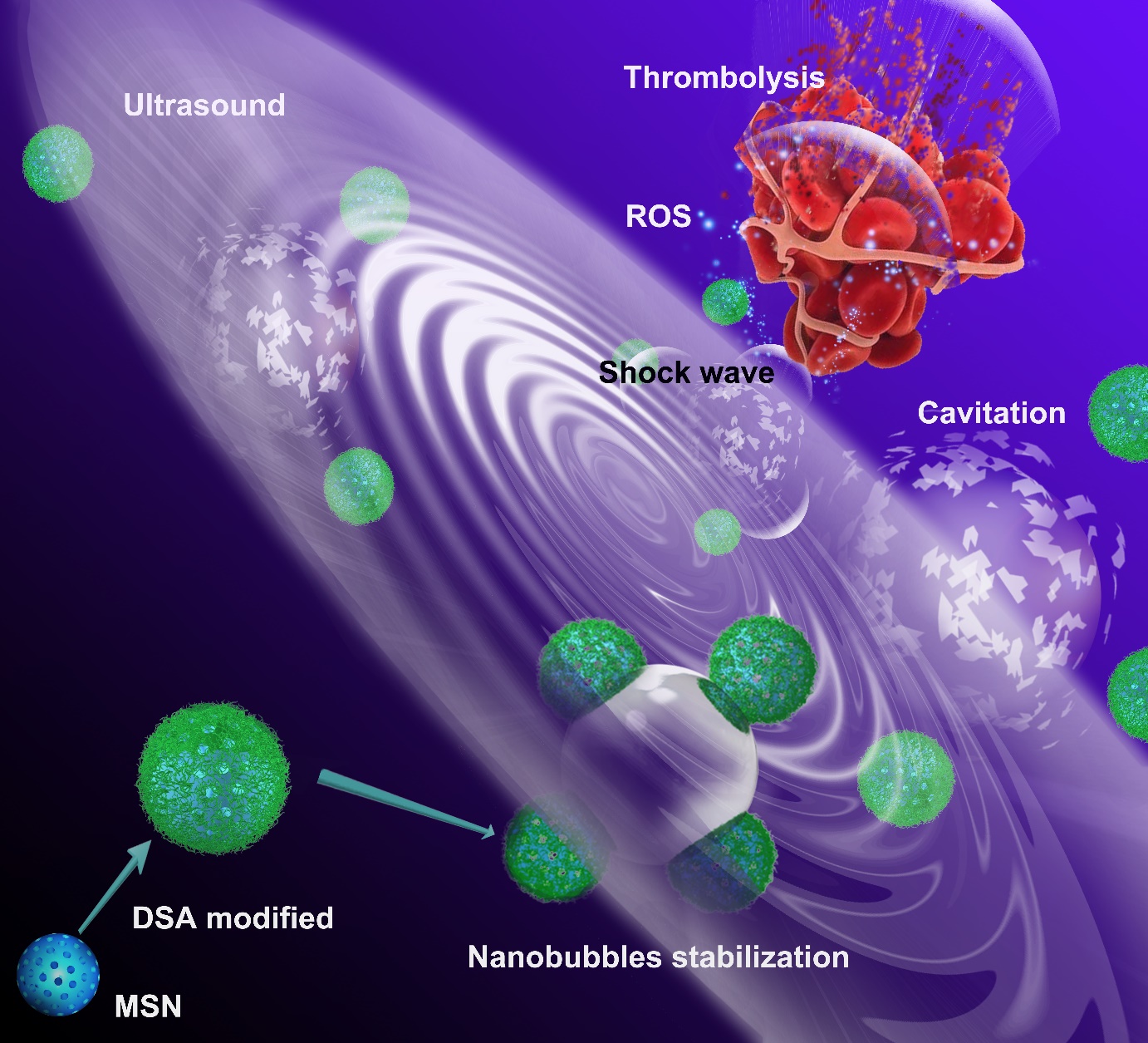Sonodynamic therapy (SDT) is a non-invasive and highly penetrating treatment strategy under ultrasound irradiation. Sonodynamic therapy relies on compounds that are activated by a targeted burst of ultrasound. The ultrasound prompts the compounds, known as sonosensitizers, to generate reactive oxygen species that destroy cancer cells in the immediate vicinity without systemic side effects. However, uncertainty in the mechanism of SDT has seriously hindered its future clinical application.
In order to solve the problem, researchers from the Institute of Acoustics of the Chinese Academy of Sciences (IACAS) and Beijing University of Chemical Technology (BUCT) explored the sonosensitizer-free enhancement mechanism by adjusting the hydrophobicity of nanoparticles.

Figure 1 Schematic illustration of the wettability of MSN modulated SDT for sonothrombolysis. (Image by IACAS)
Nanoparticles can adsorb and stabilize nanobubbles in liquid, thus enhancing SDT efficiency. The stability of the nanobubbles is positively correlated with the desorption energy of the nanoparticles, which is determined by the wettability of the nanoparticles. This conclusion is verified for mesoporous silica and polystyrene nanoparticles and it is found that nanoparticles with a water contact angle of about 90° possess the largest desorption energy.
To further apply this conclusion, thrombus models are constructed on rats and the experimental results demonstrate that nanoparticles with the largest desorption energy have the highest thrombolytic efficiency.

Fig.2. Quantitatively evaluate cavitation nuclei using a pulsed spark cavitation method. (Image by IACAS)
In order to explore the effect of particle surface properties on the cavitation effect, we first developed a pulsed spark cavitation method to effectively mimic single-period cavitation of nanoparticles’ suspension. Typically, small-sized periodic cavitation bubbles are barely recognized using optical methods and cavitation nuclei on the wall of container, having a significantly influence on the observations. In addition, cavitation clouds are impacted by periodic cavitation bubbles interactions, which can induce high background interference. Pulsed spark cavitation method reflects the real state of the cavitation nuclei in suspension, eliminating the influence of Bjerknes force on the position and number of the nuclei.
The research, published online in Advanced Materials, is supported by the National Natural Science Foundation of China (Nos.21822802, 51772018, 11674350 and 11874062).
Reference:
WU Qingyuan, ZHANG Fengrong, PAN Xueting, ZENG Zhijie, WANG Hongyu, BAI Lixin, and LIU Huiyu. Surface wettability of nanoparticle modulated sonothrombolysis. Advanced Materials, 2021, 2007073:1-8. DOI: 10.1002/adma.202007073.
Contact:
ZHOU Wenjia
Institute of Acoustics, Chinese Academy of Sciences, 100190 Beijing, China
E-mail: media@mail.ioa.ac.cn


